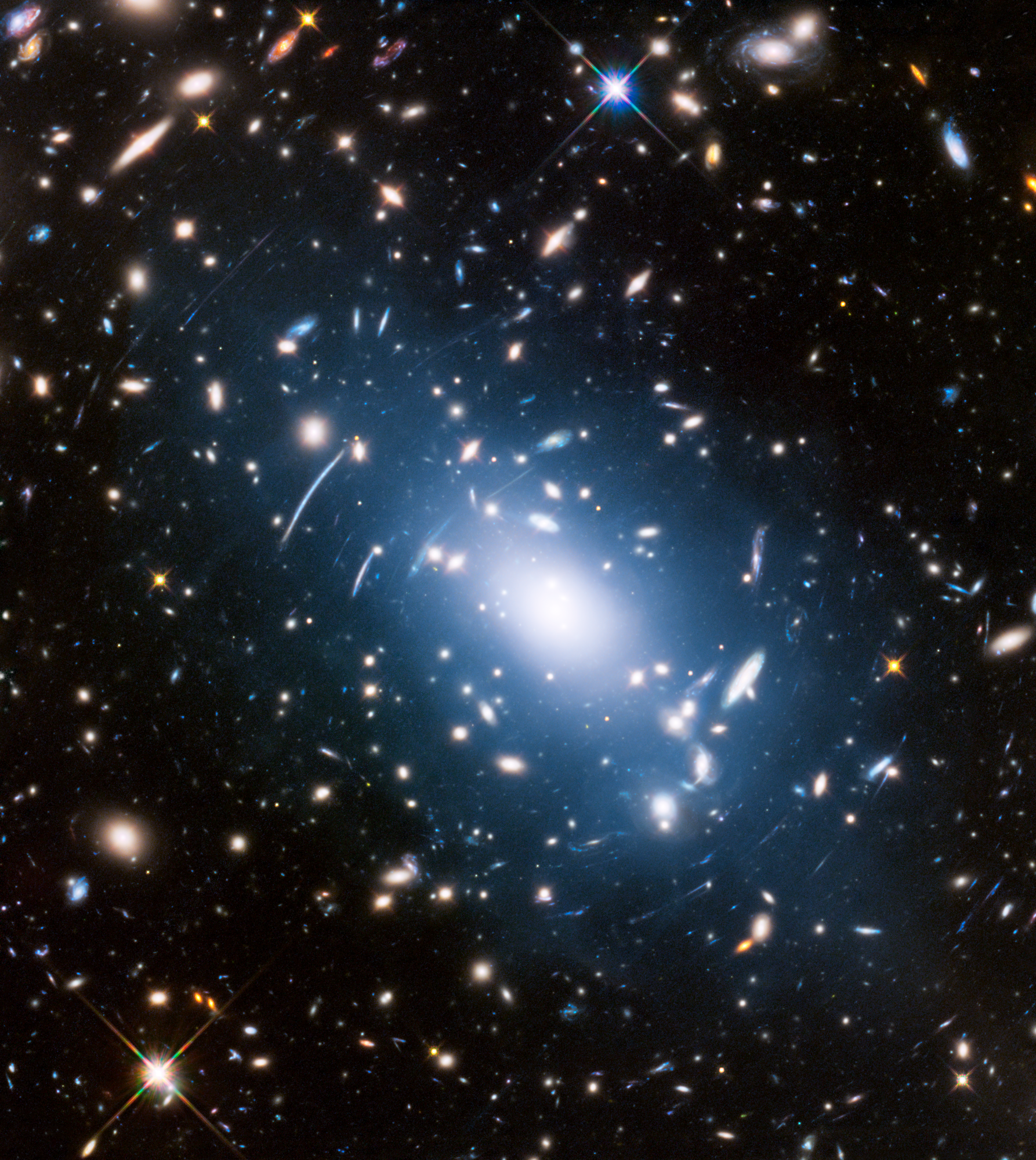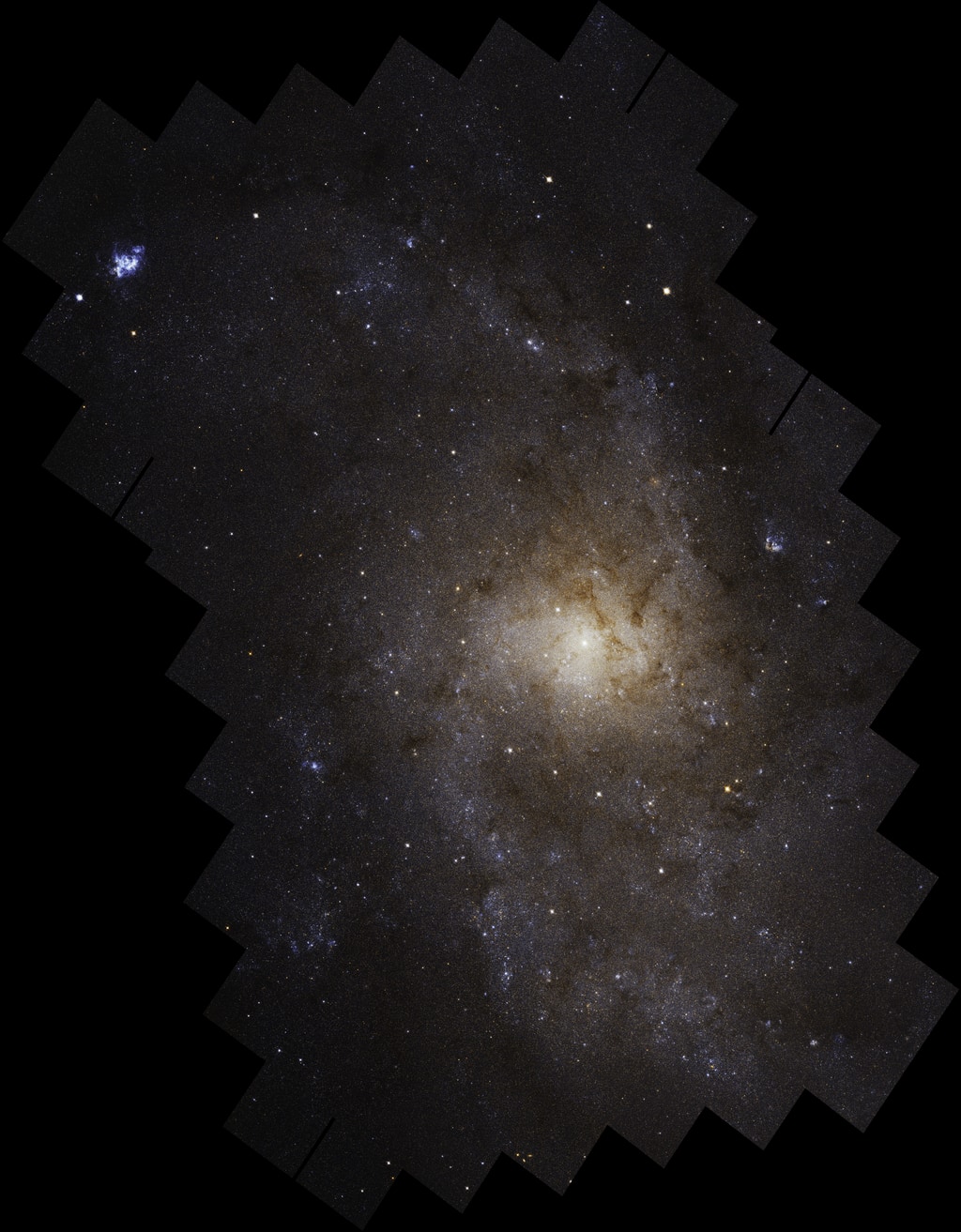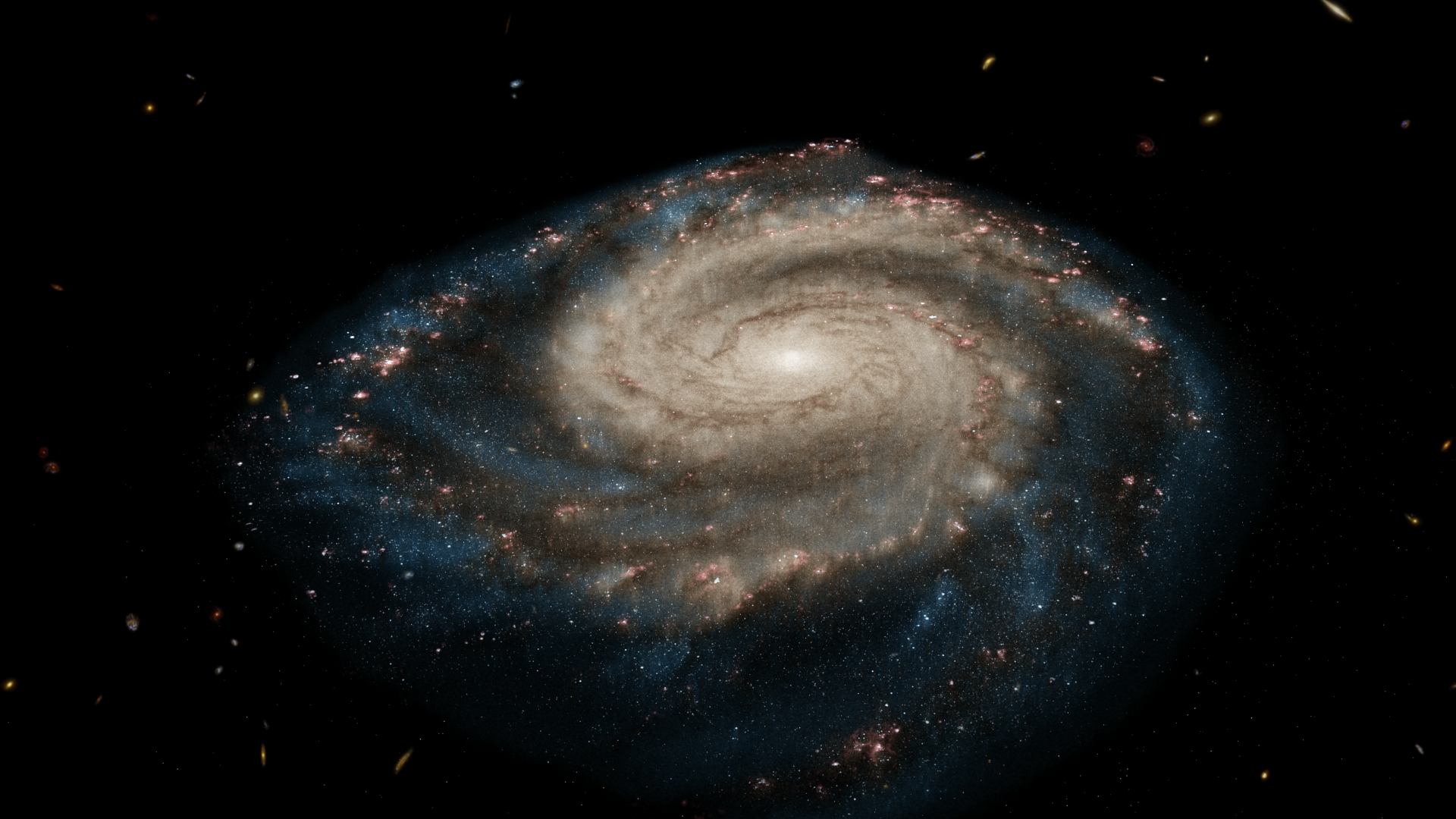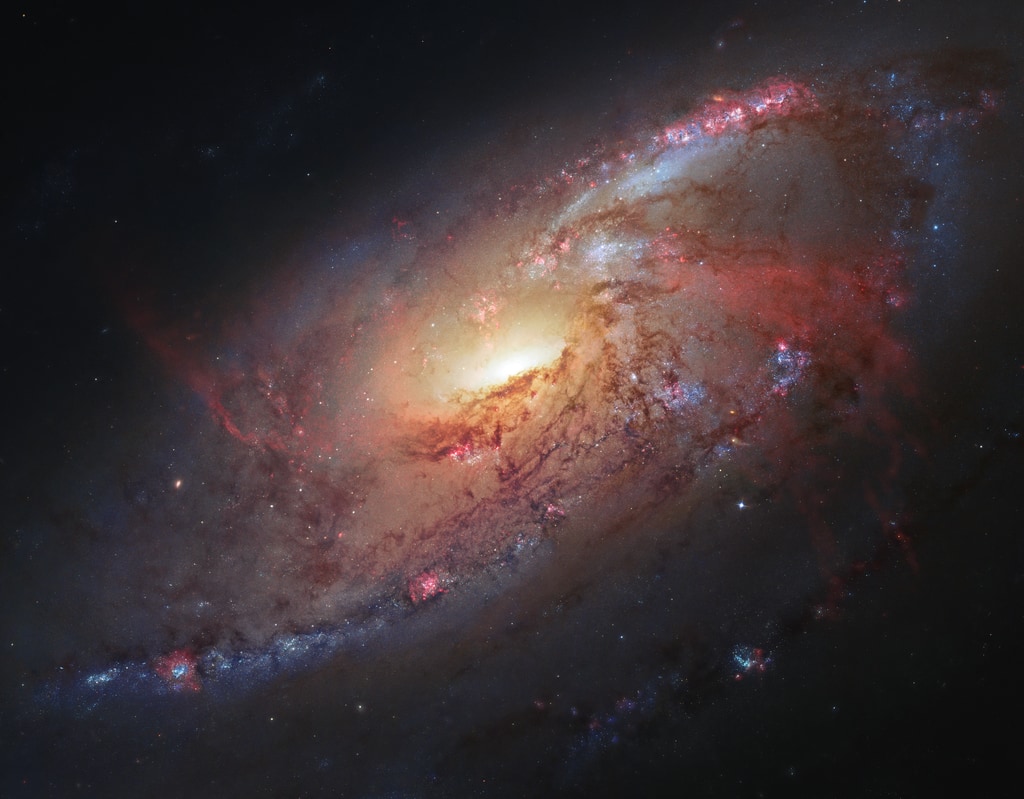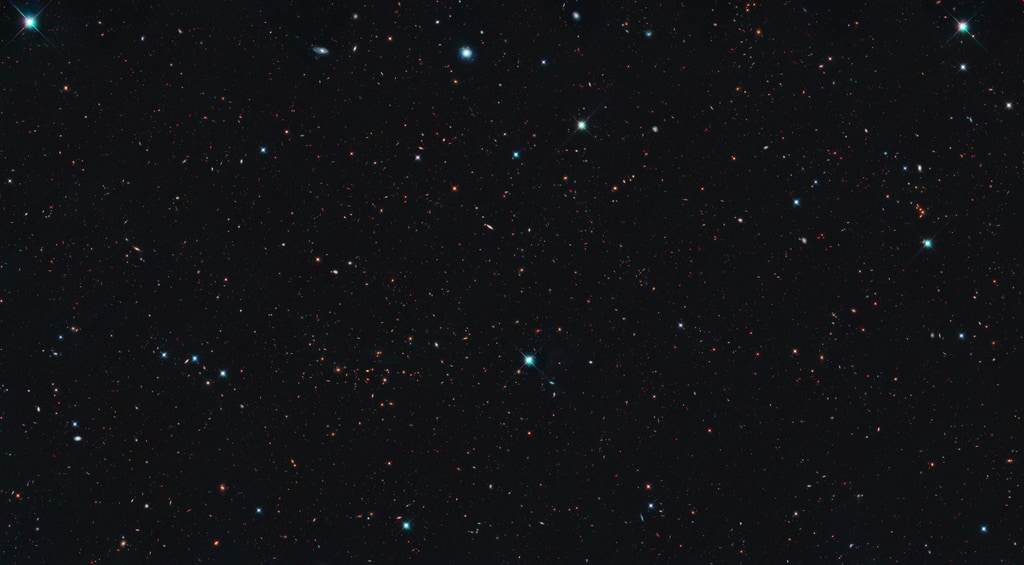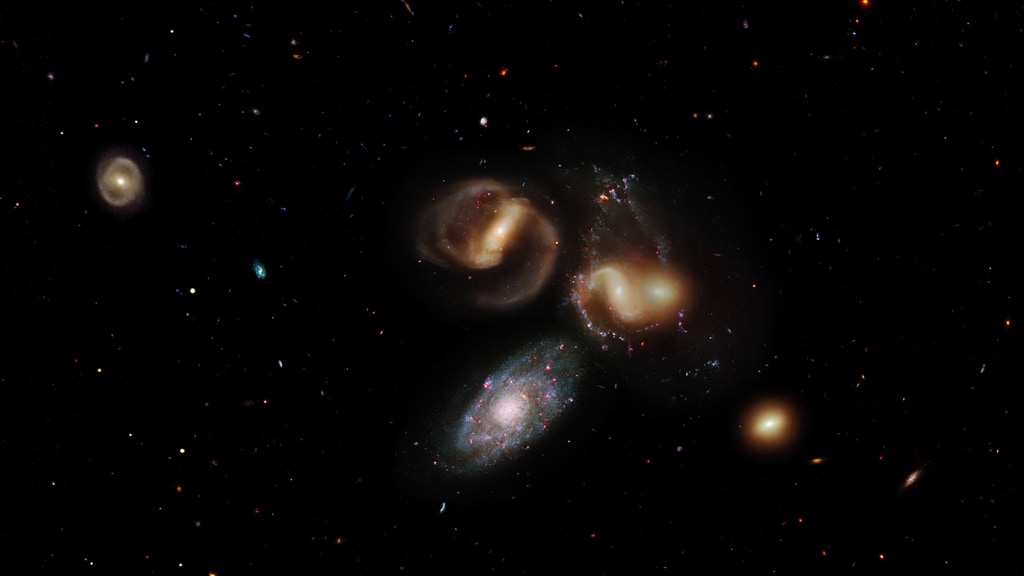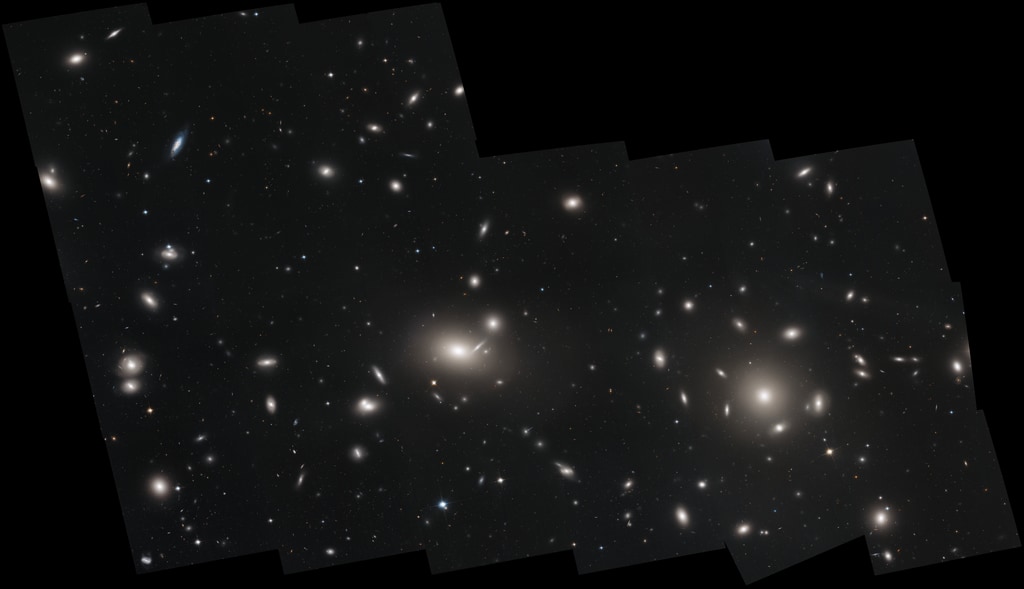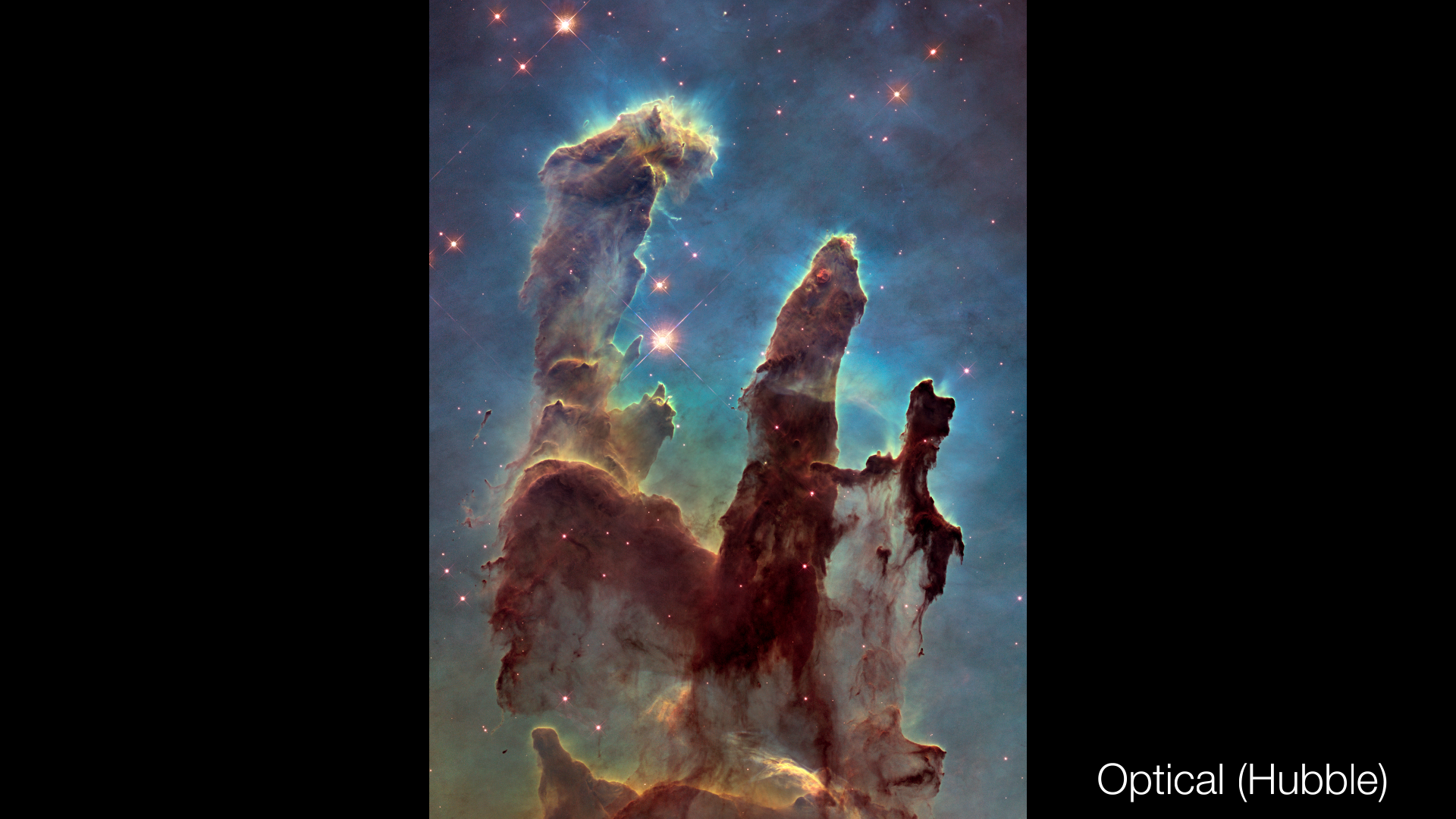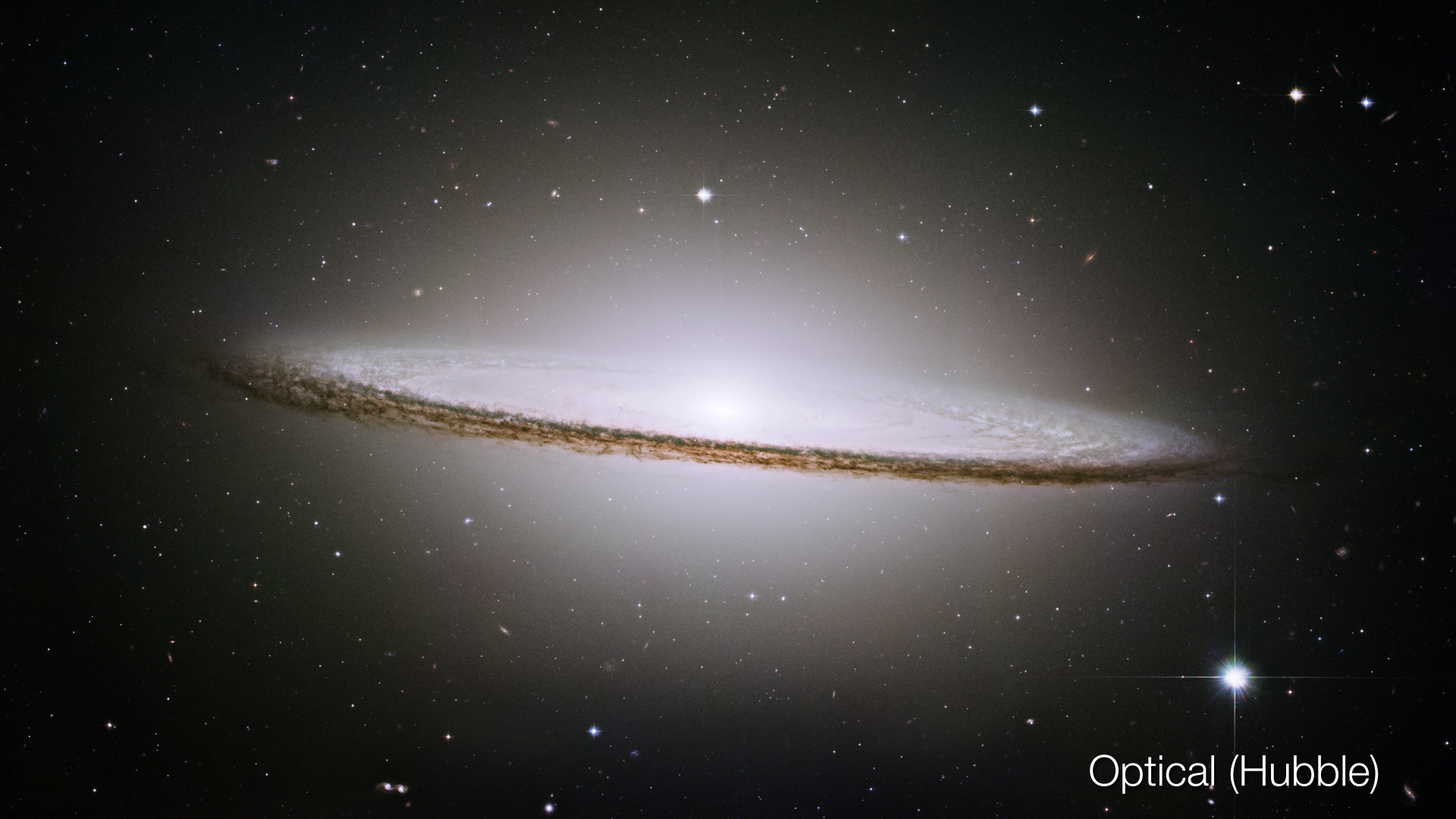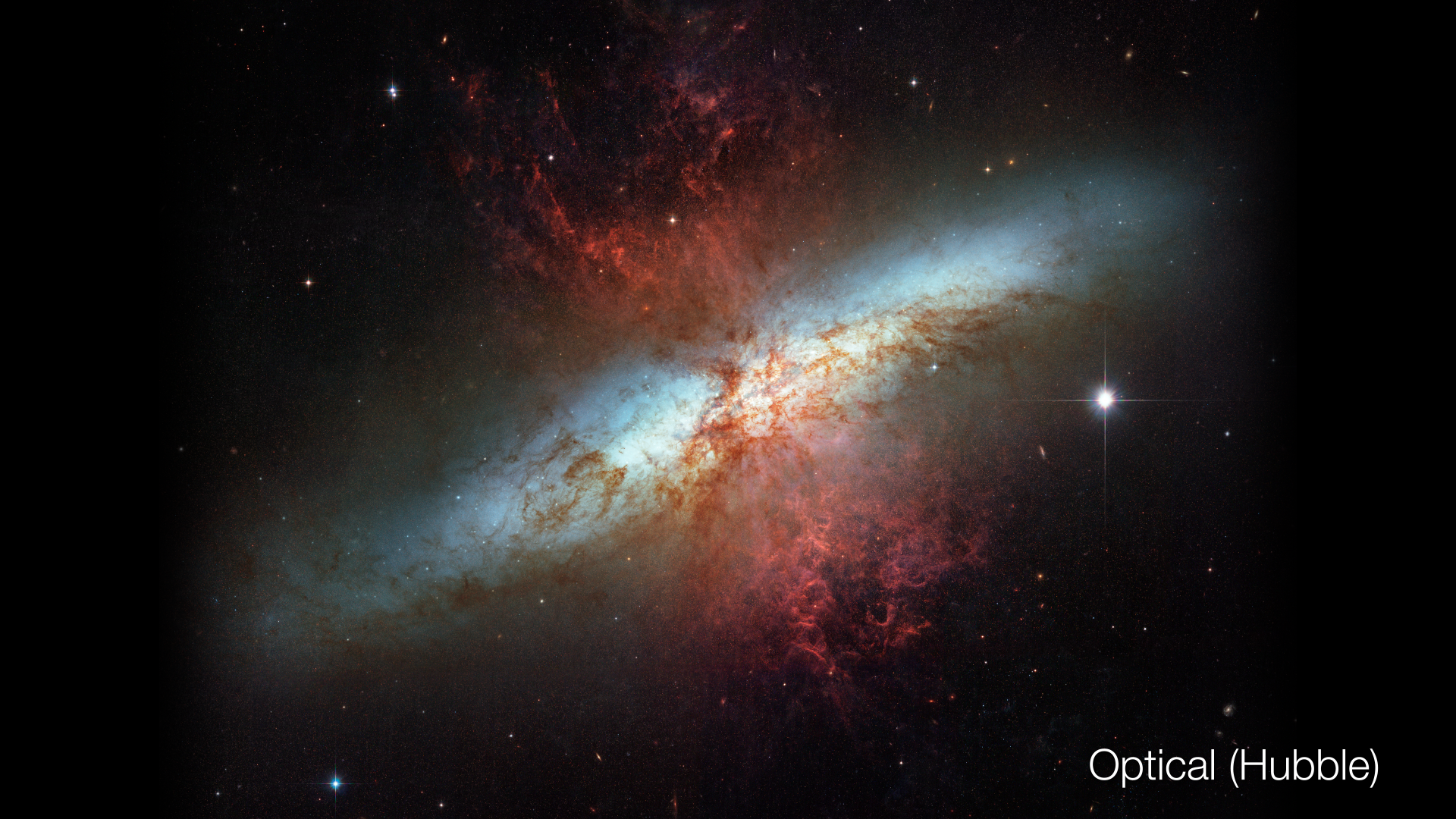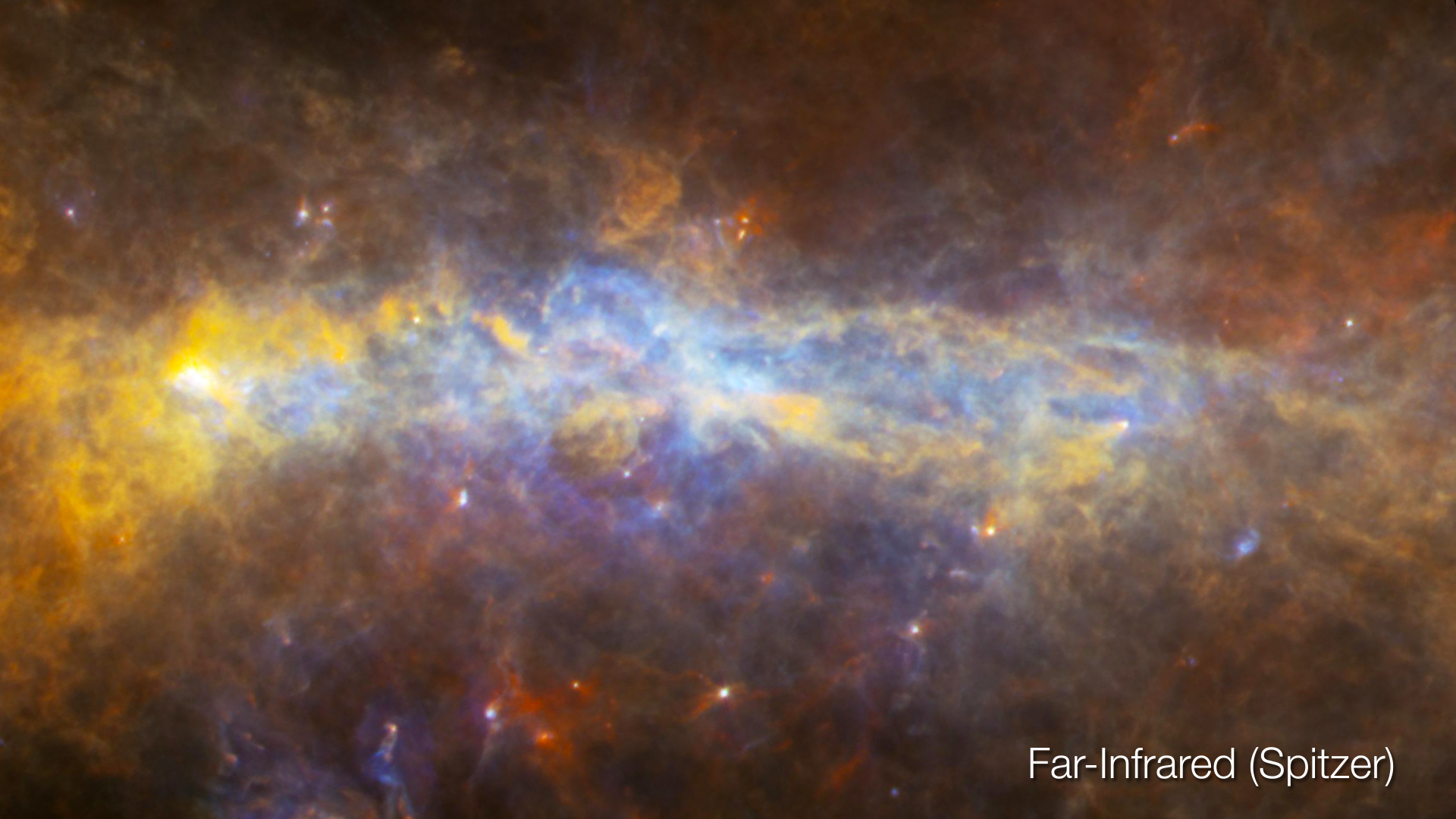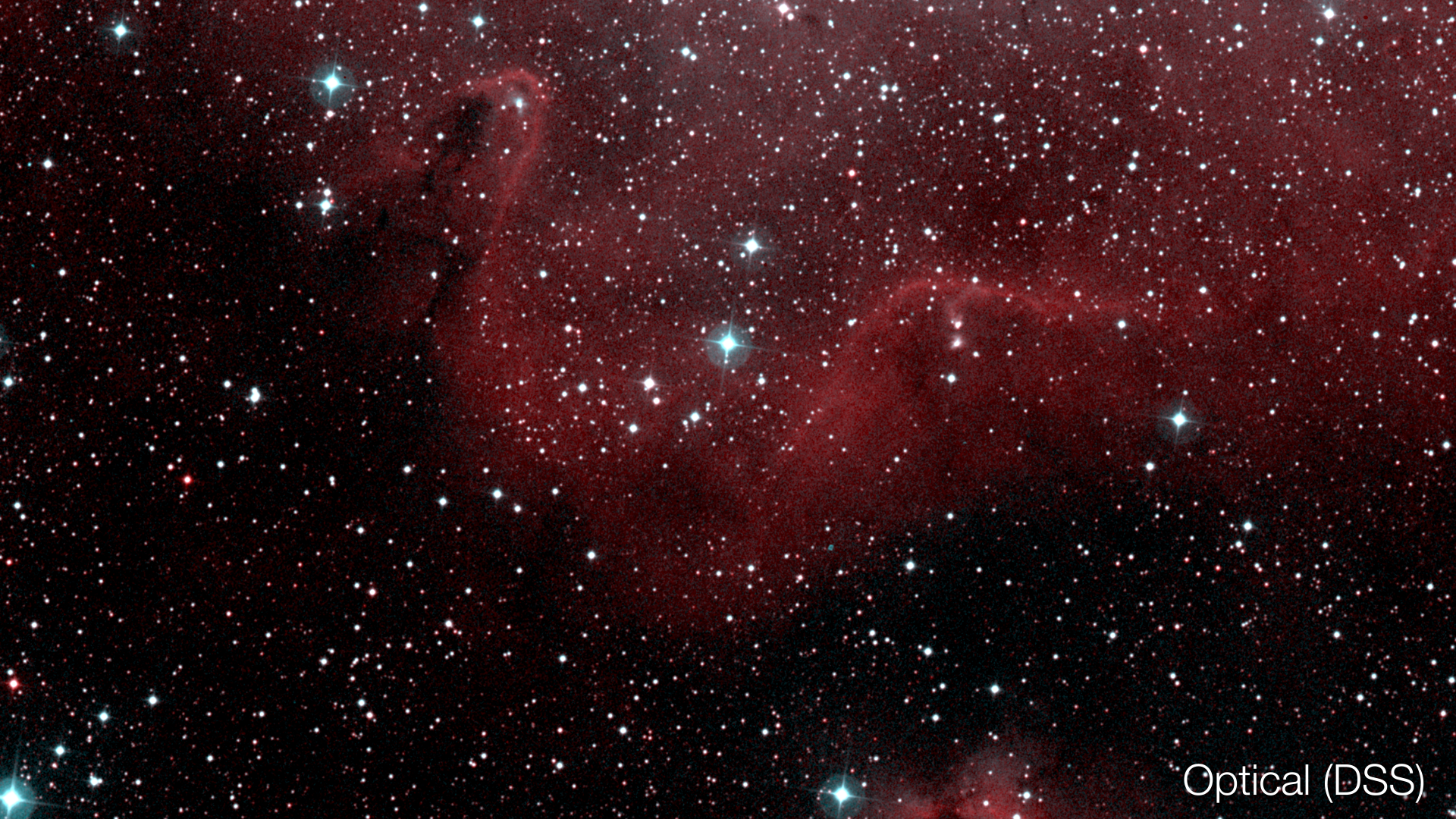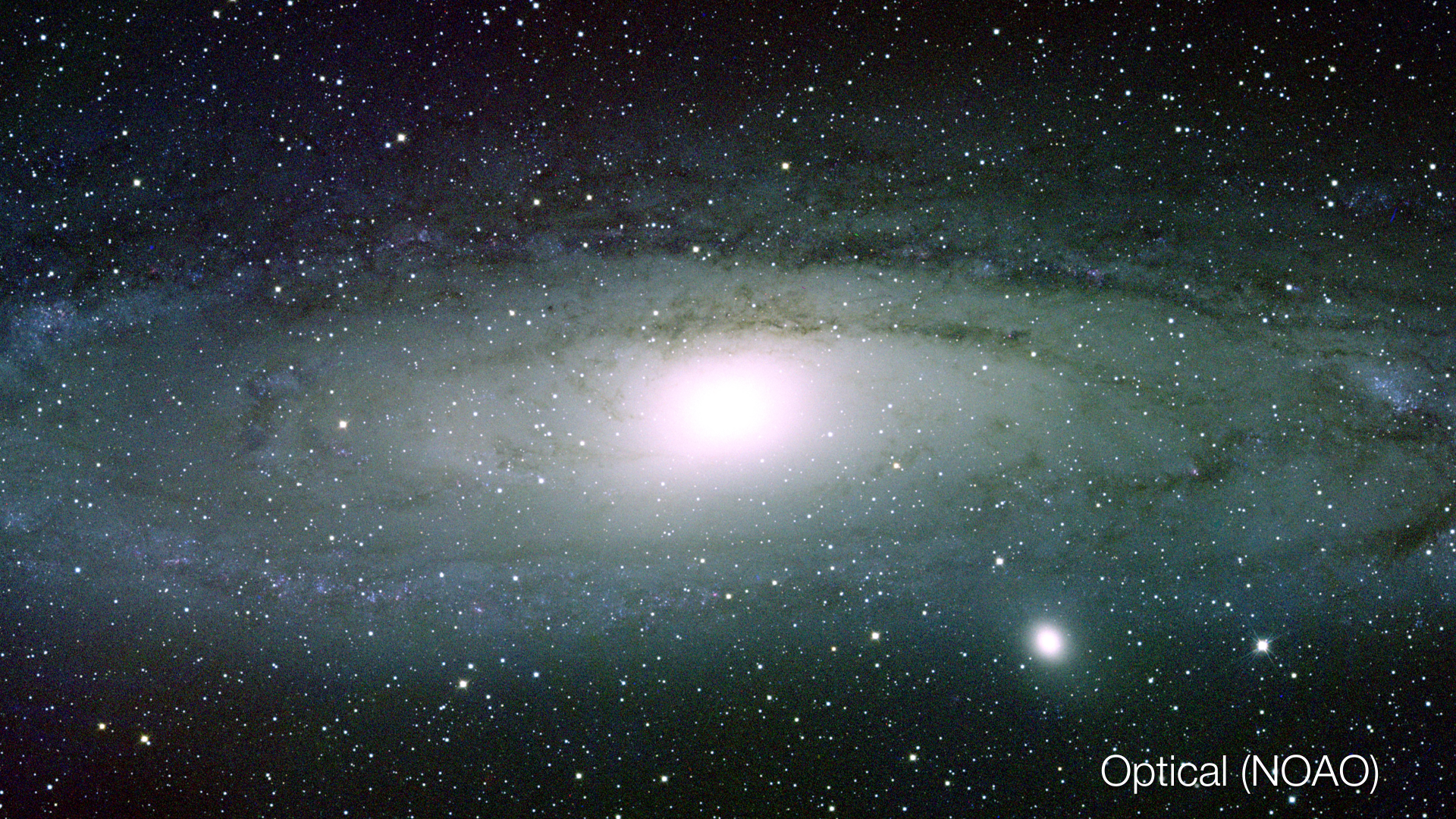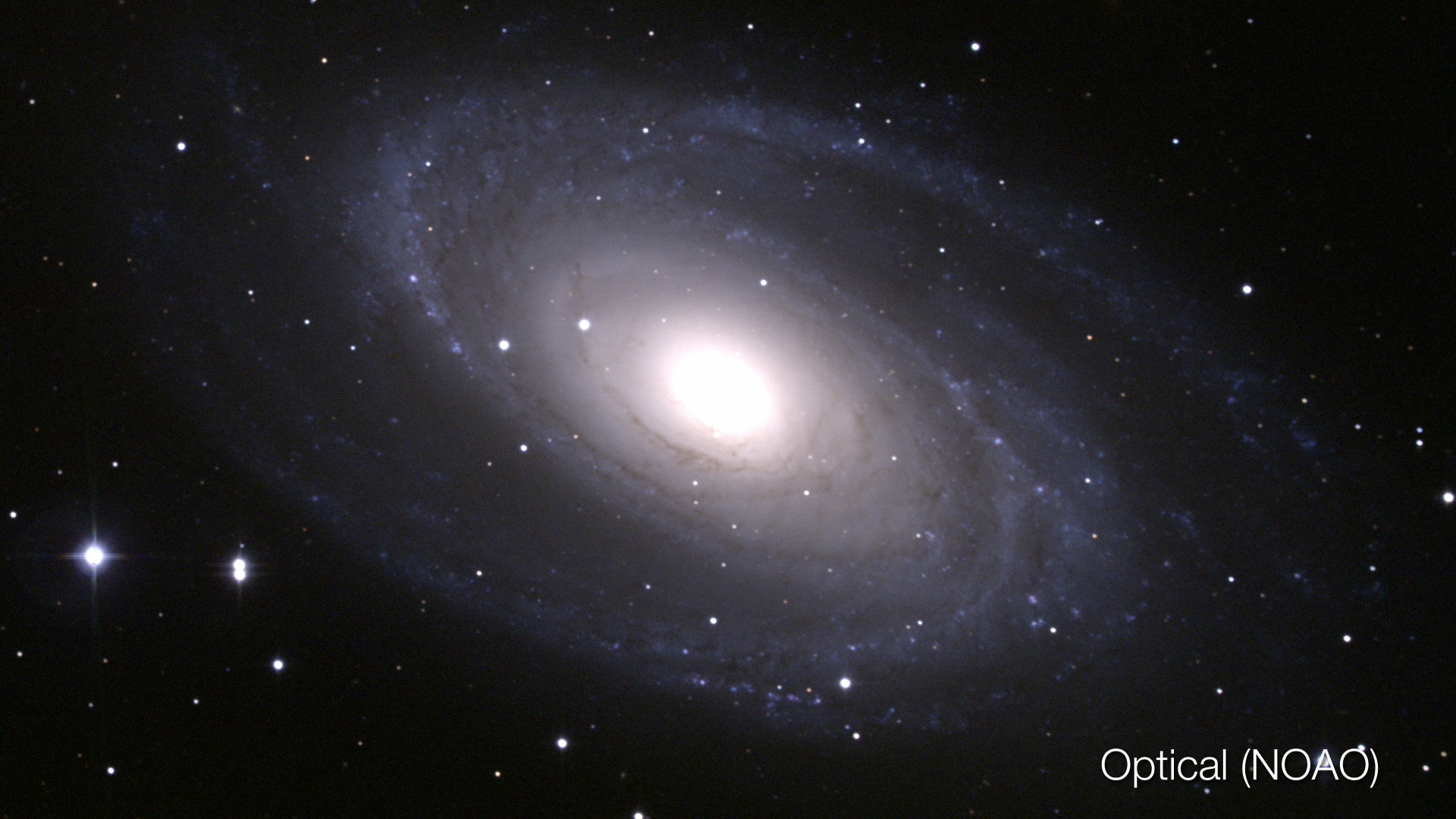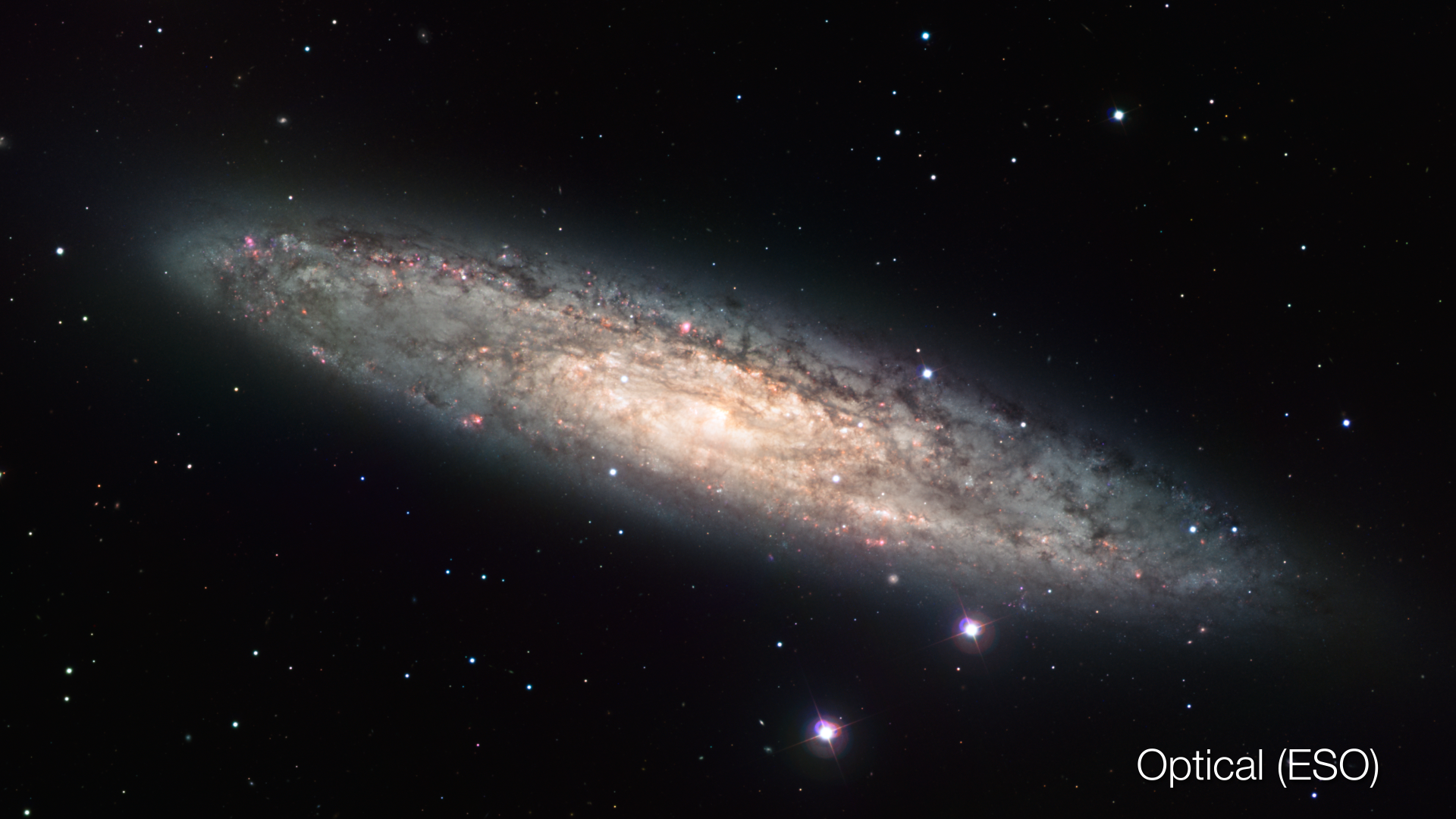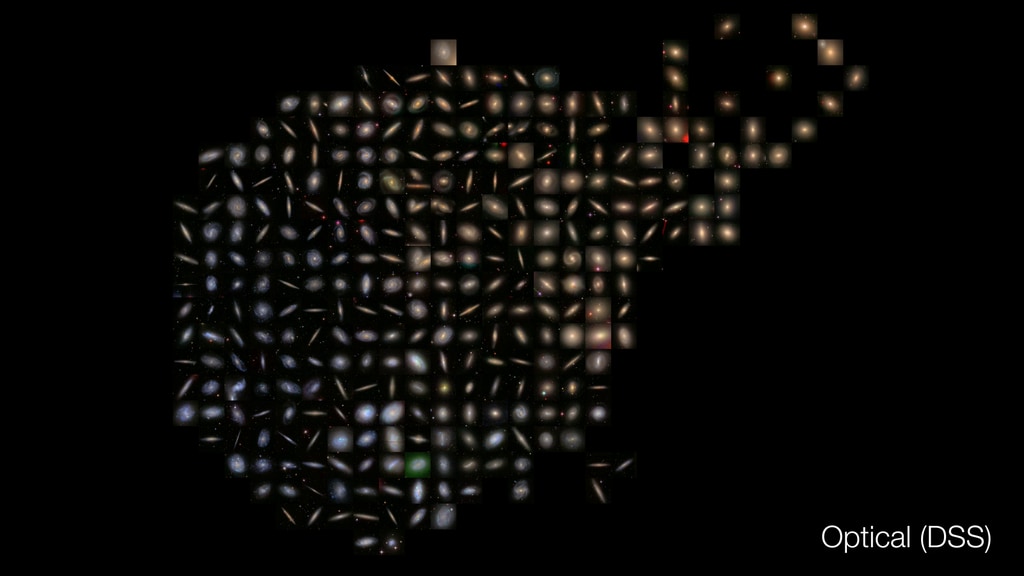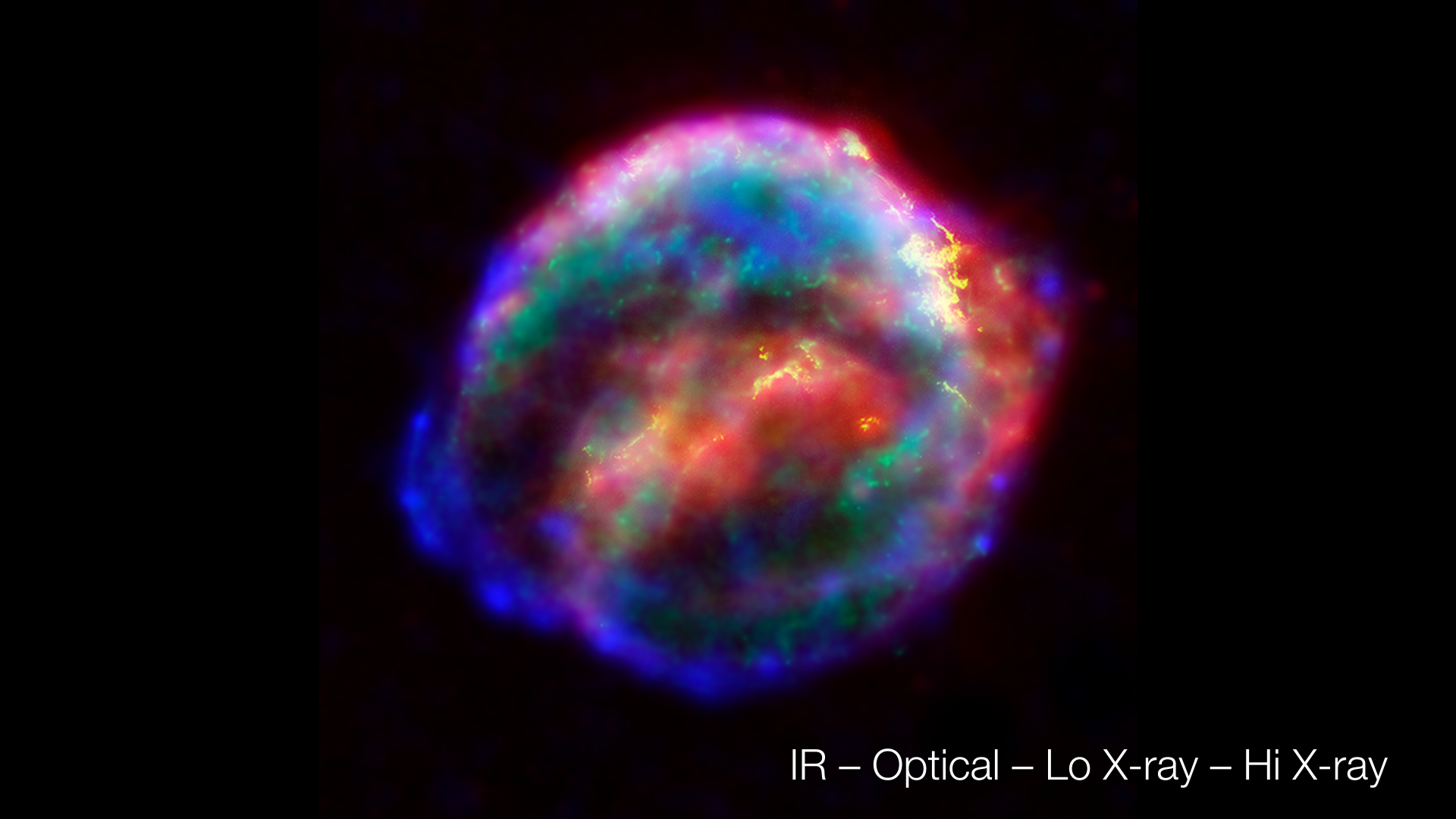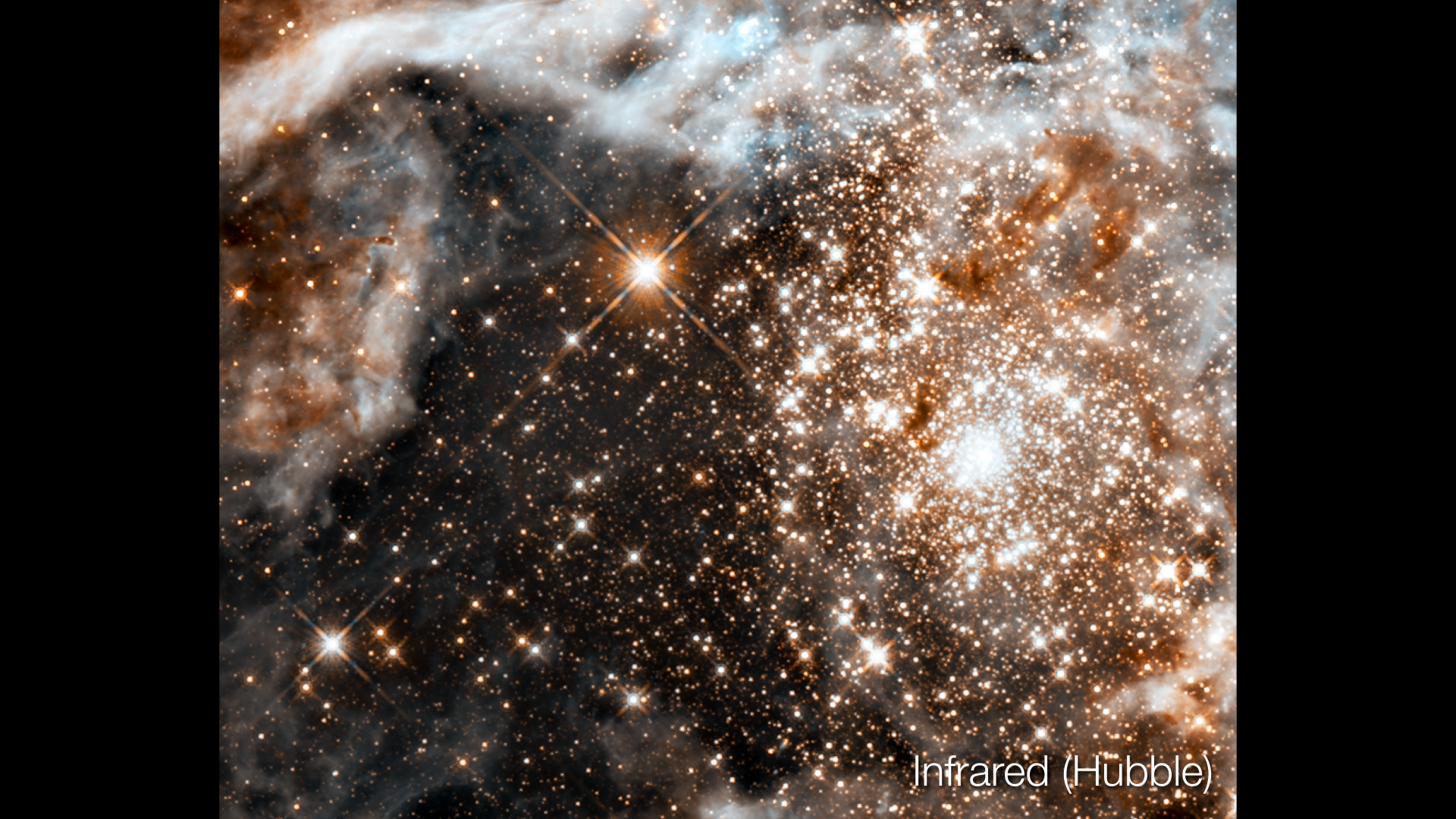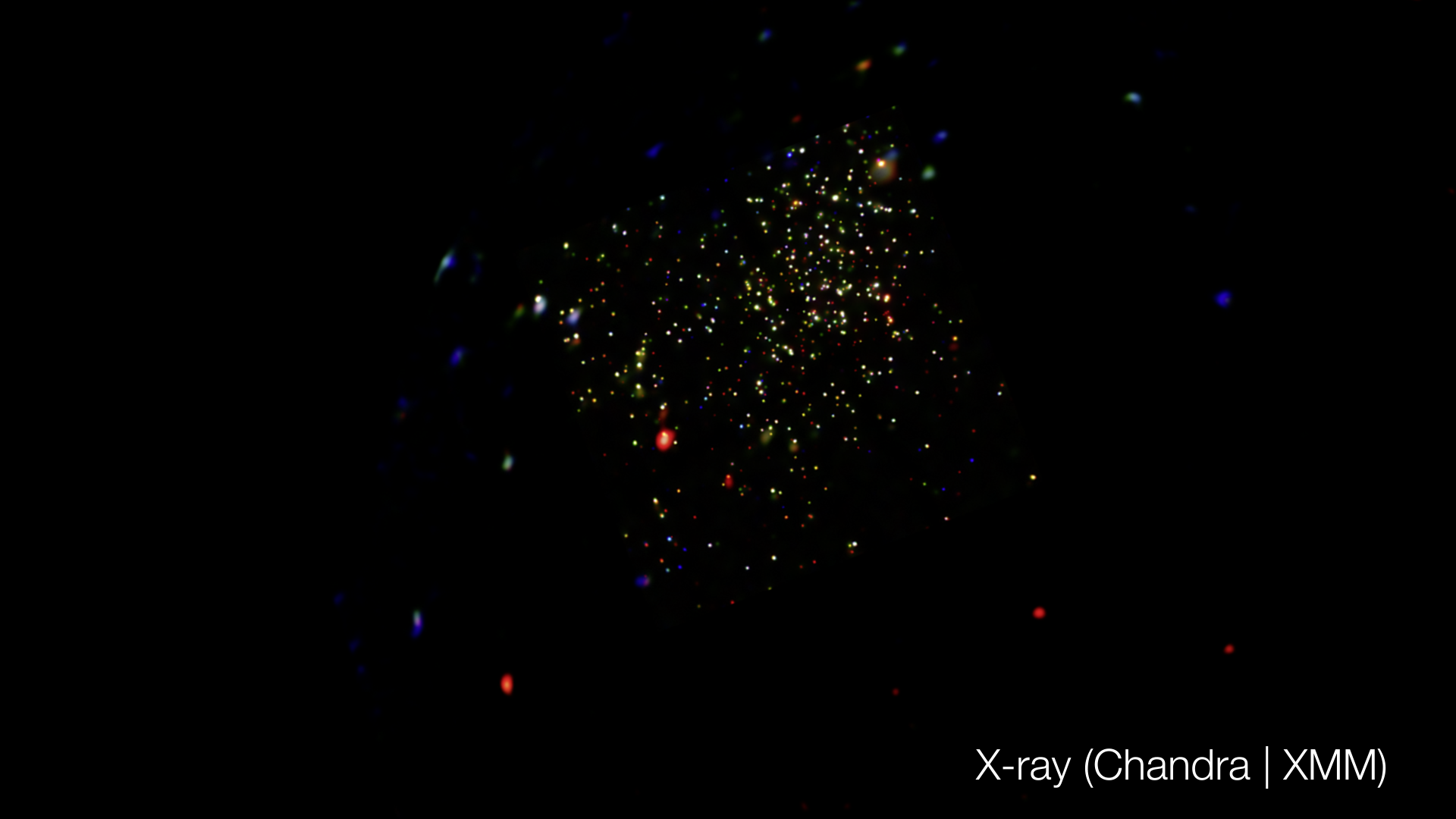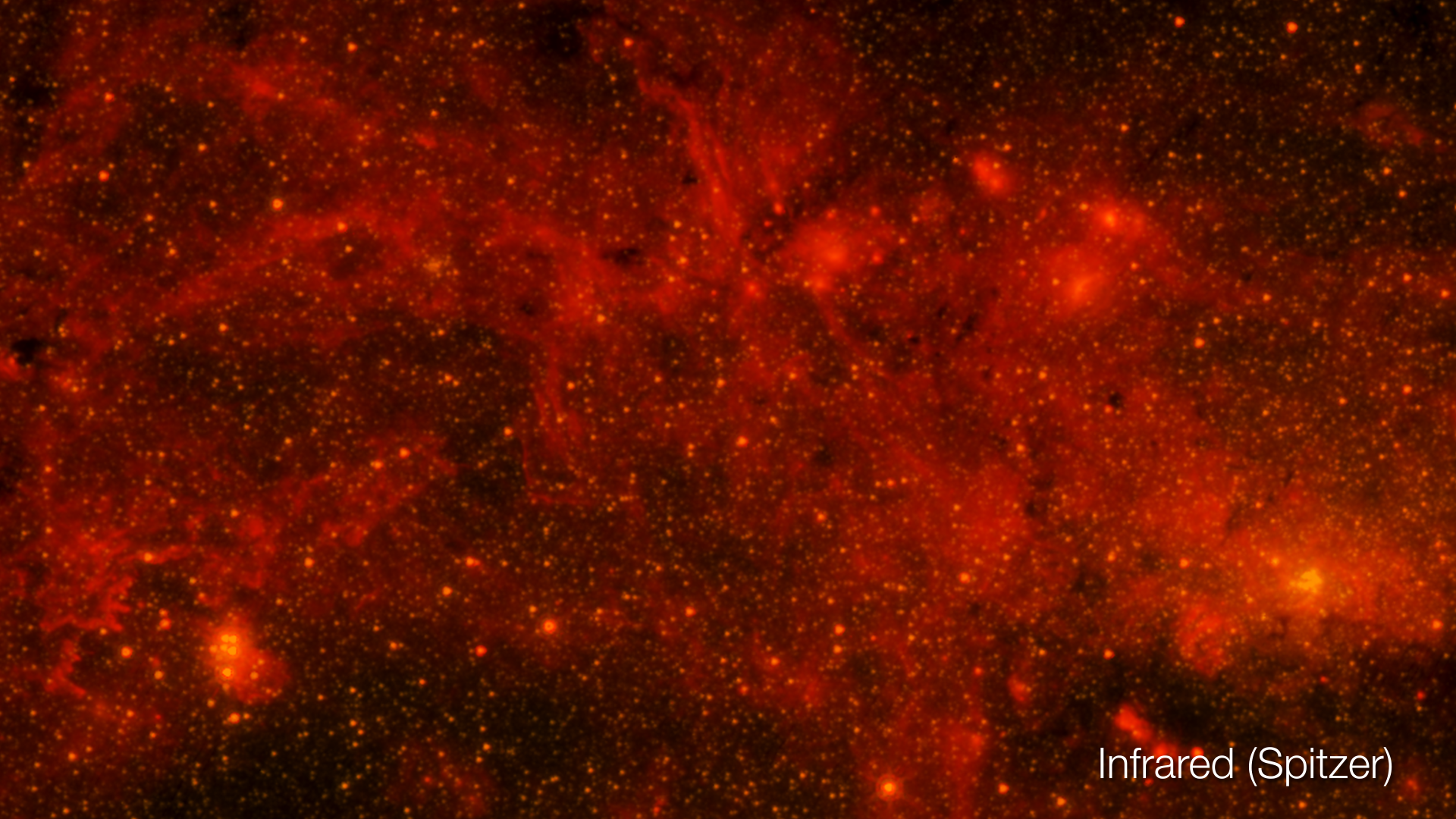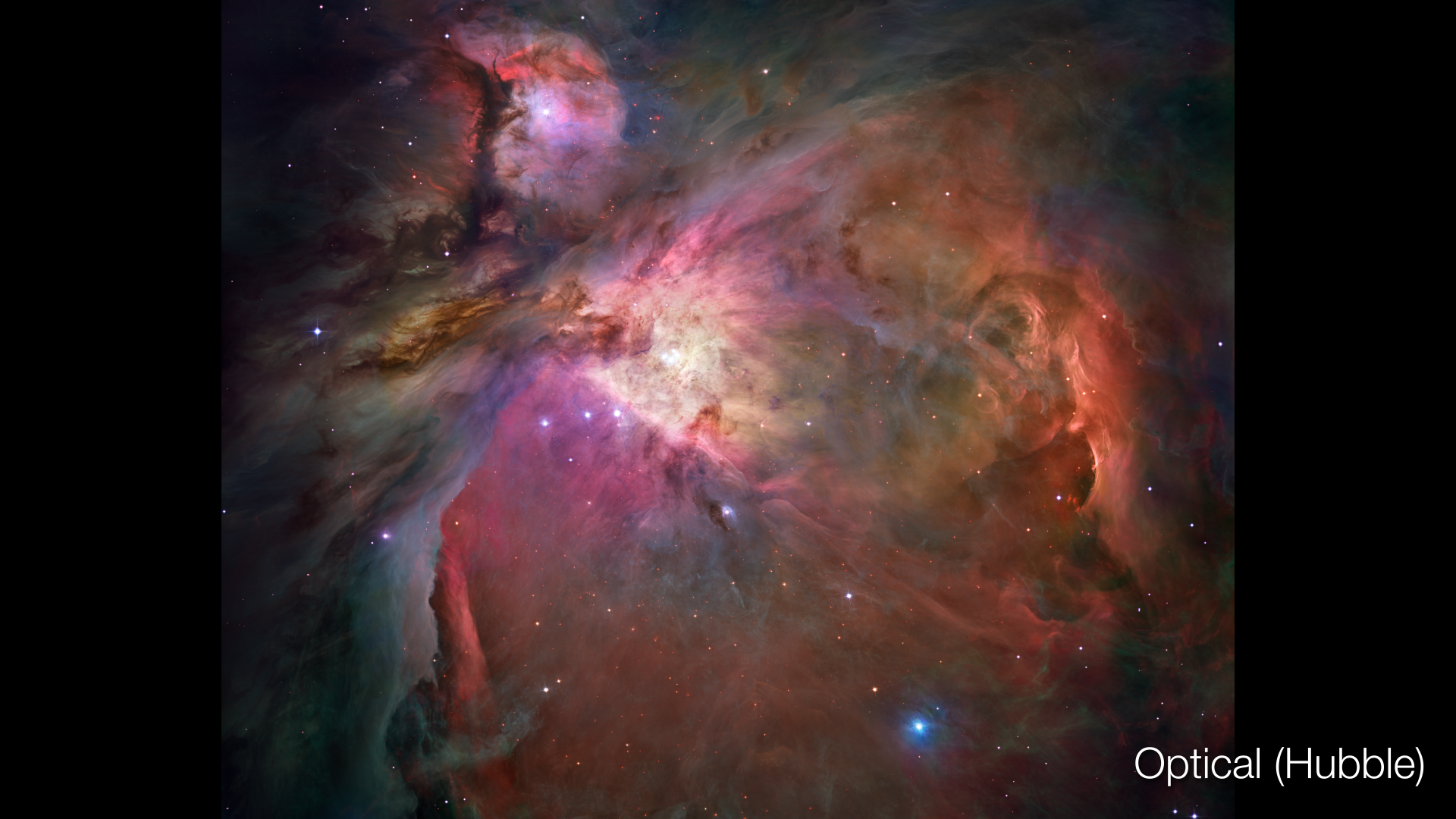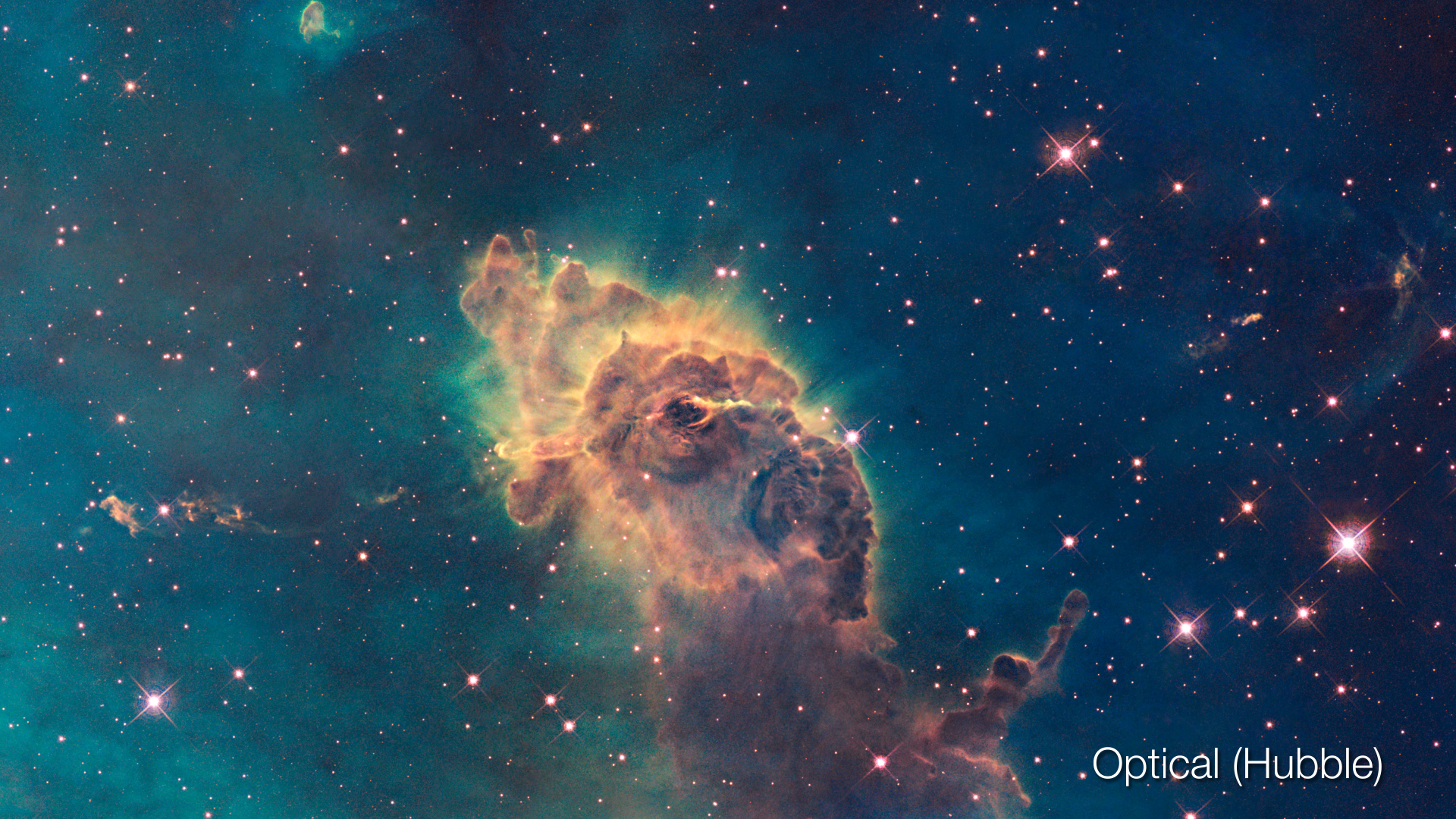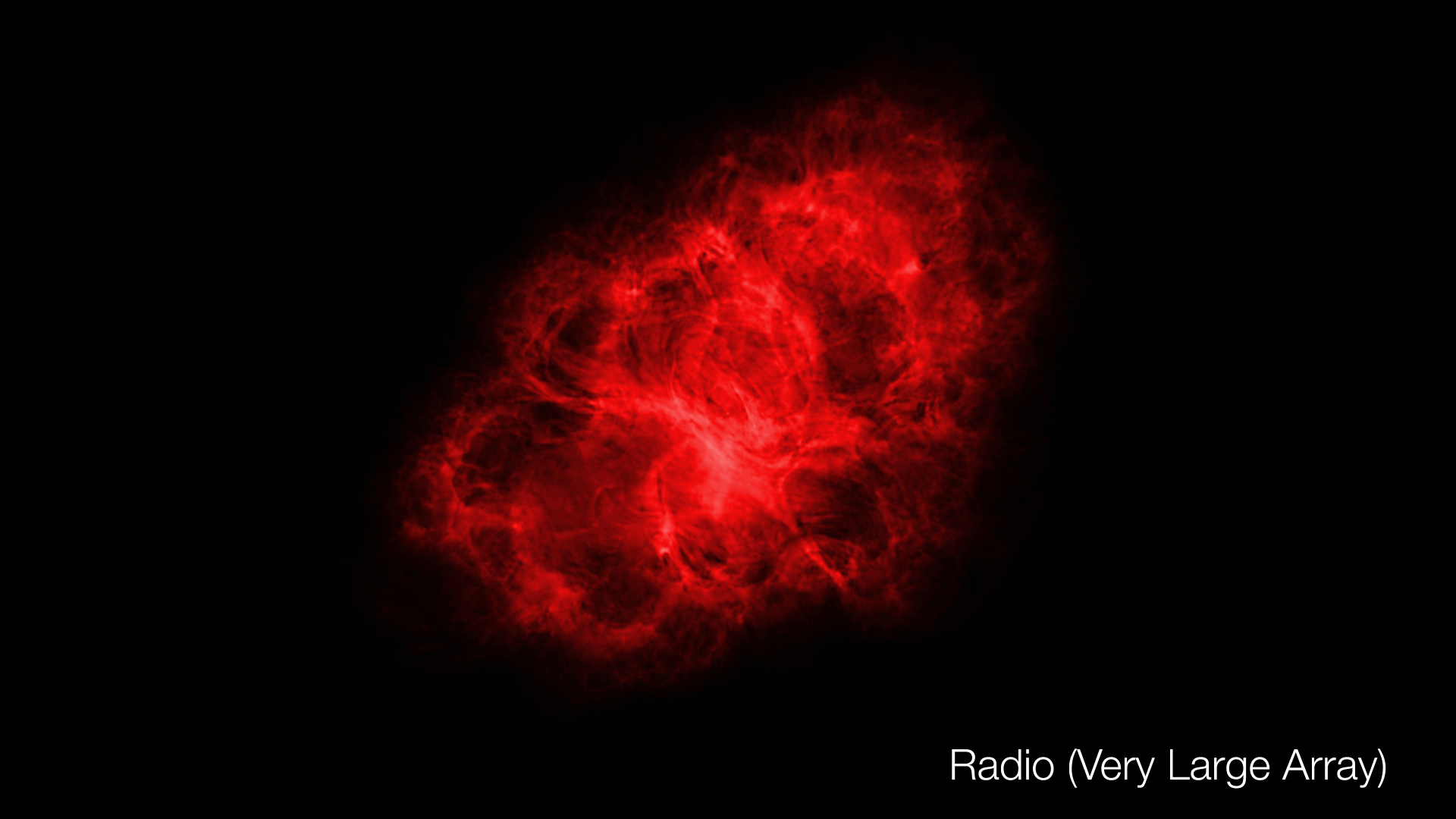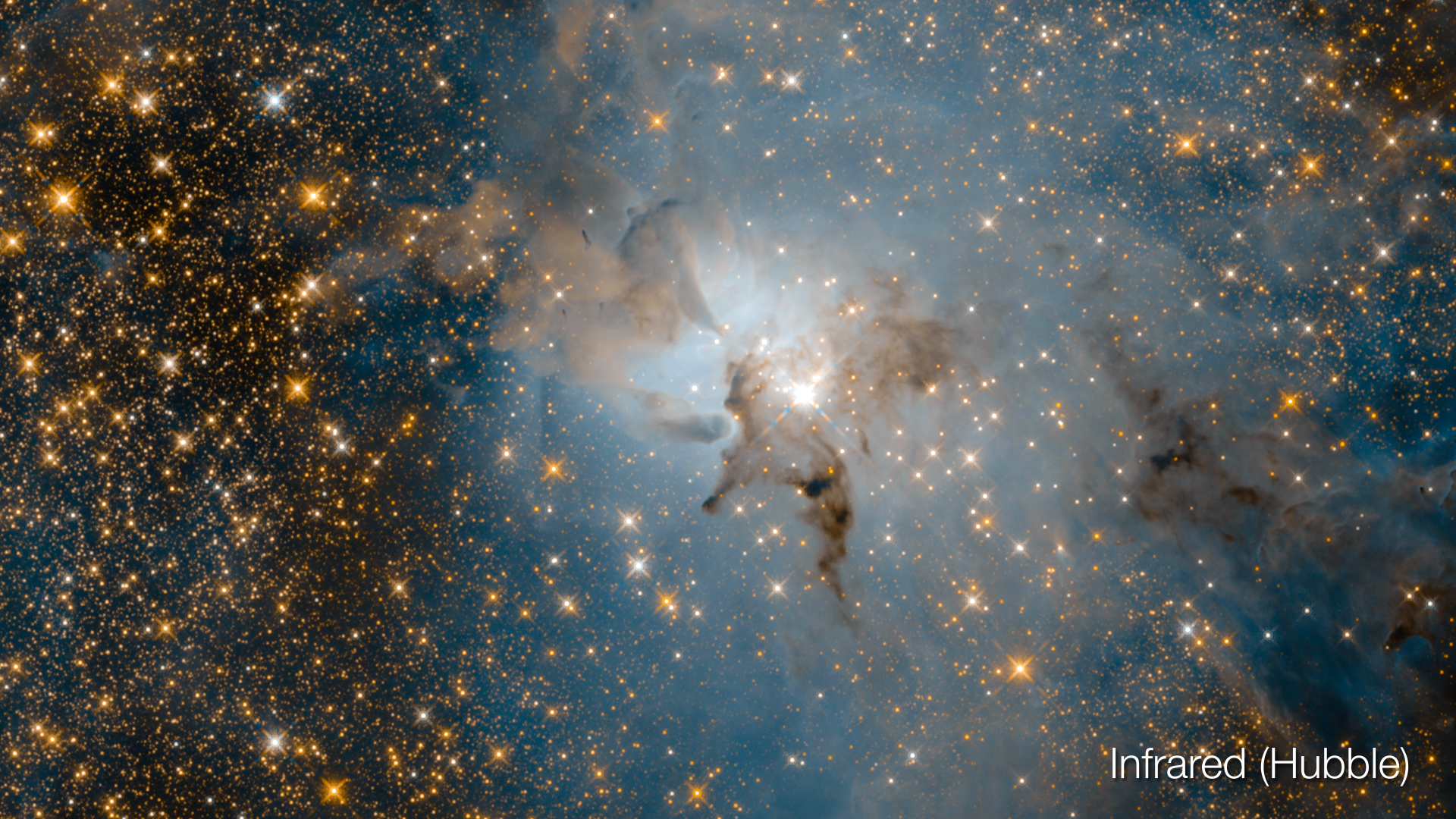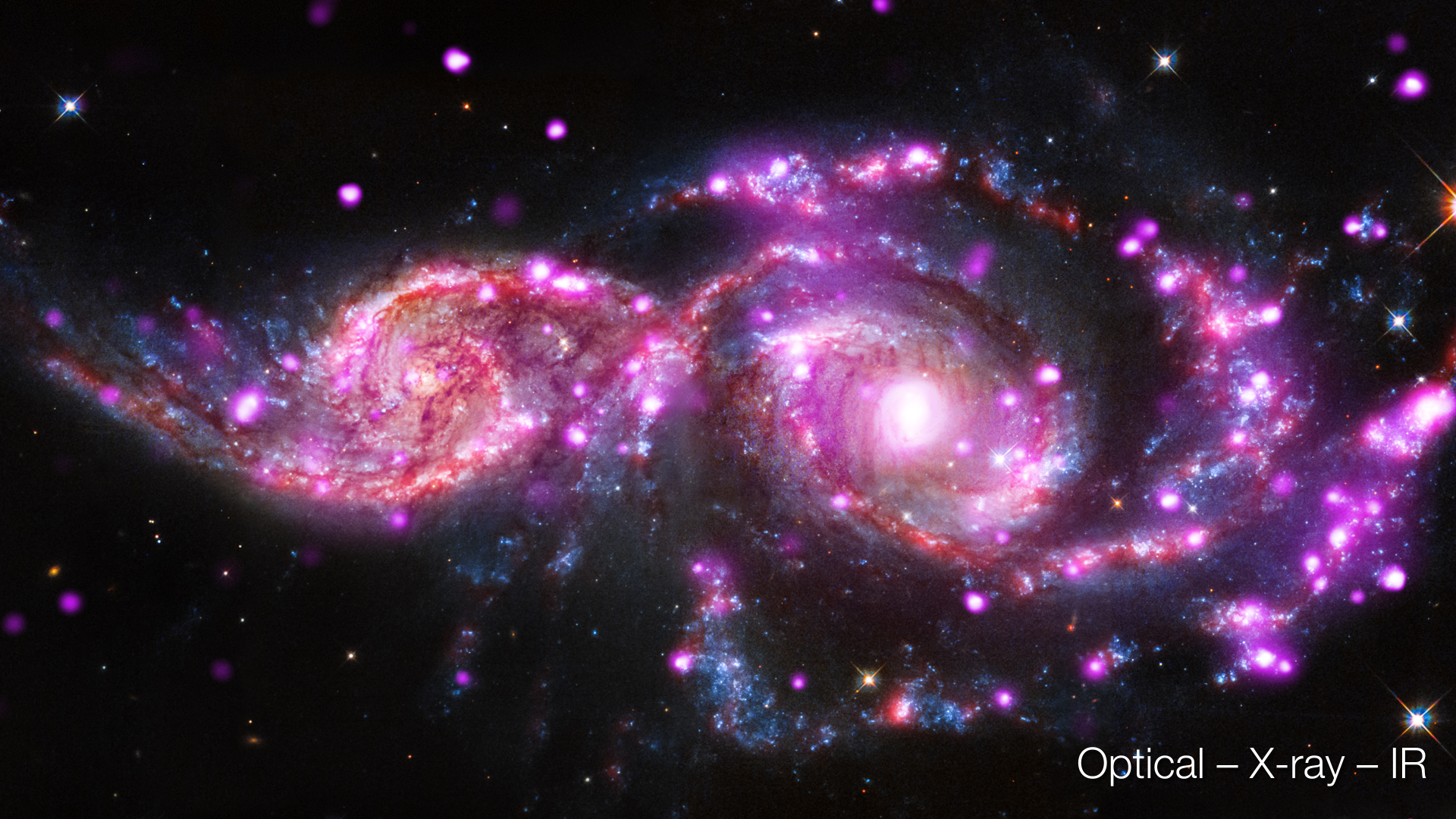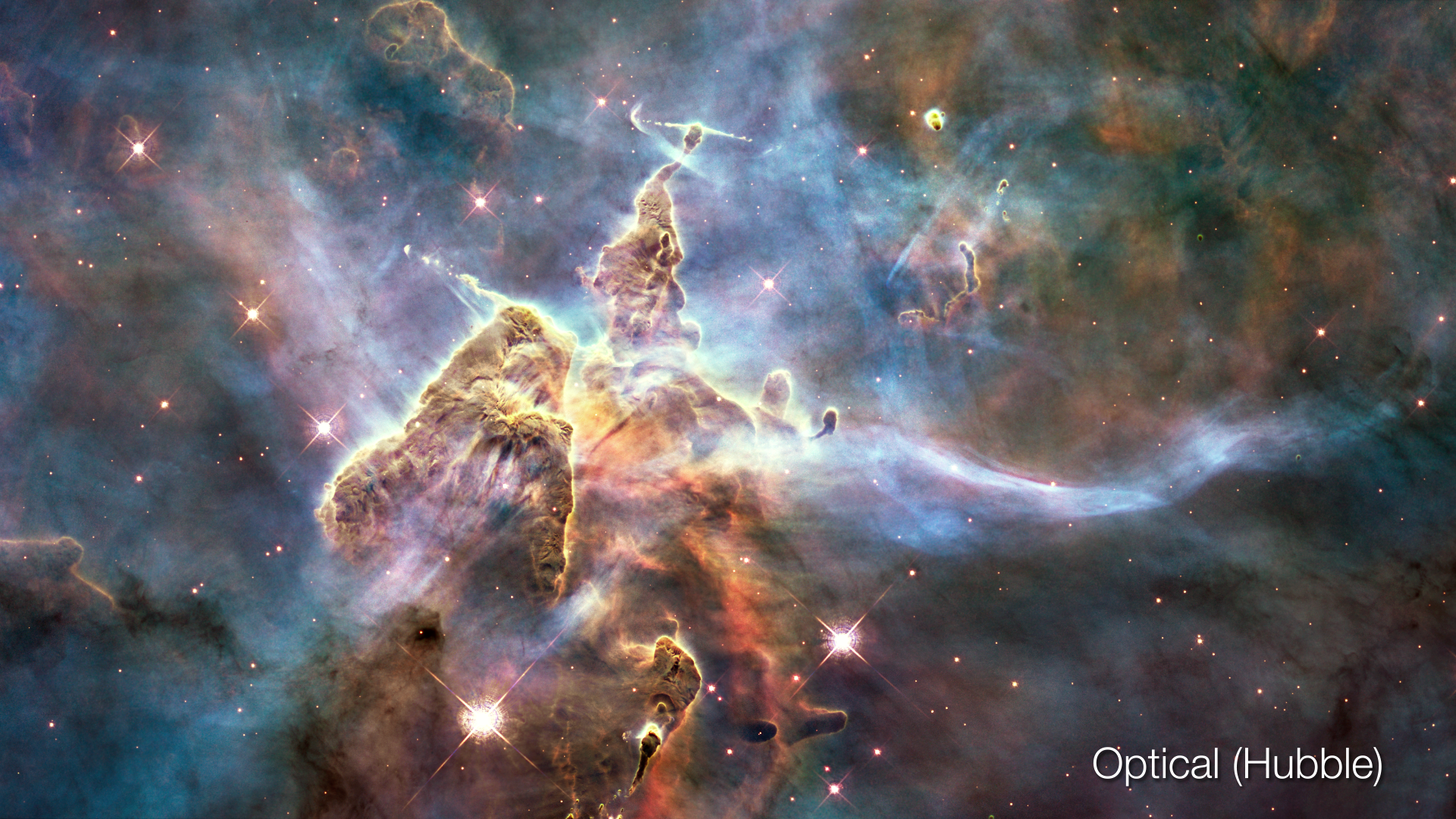The Whirlpool Galaxy: Visible and X-ray Views
This animation contrasts the visible-light (Hubble Space Telescope) and X-ray (Chandra X-ray Observatory) images of Messier 51, the majestic Whirlpool galaxy.
This sequence uses visible (Hubble) and X-ray (Chandra) imagery to highlight different structures within the Whirlpool galaxy (Messier 51). As seen in visible light, the familiar whirlpool shape is traced out by glowing spiral arms. These arms are composed of billions of stars orbiting about the center of the galaxy over millions of years. The pink color is from hot hydrogen gas that permeates the galaxy and indicates sites of new star formation. Silhouetted in the bright arms are dark lanes of obscuring dust that blocks visible light. The stars farther away from the center orbit more slowly and fall behind, creating the signature spiral "winding" arm. A massive black hole lies at the galaxy’s center. The black hole can’t be seen directly, but its presence is hinted at by the dense star clusters at the center. A second smaller spiral galaxy can be seen in the upper-right portion of the image. The second image shows the X-ray view, highlighting the very hottest gas at millions of degrees Fahrenheit. The X-rays most closely match the visible pink hot gas in active star-forming regions and are particularly strong near the galactic centers of both galaxies. X-rays are also penetrating obscuring dust.
This animation is the same as above, played twice as fast.

Visible image of the Whirlpool Galaxy

X-ray image of the Whirlpool Galaxy

Visible and X-ray image of the Whirlpool Galaxy
Credits
Please give credit for this item to:
Video: NASA, ESA, and G. Bacon (STScI)
Optical image: NASA and The Hubble Heritage Team (STScI)
X-ray image: NASA/Chandra/CXC
-
Visualizer
- Greg Bacon (STScI)
-
Technical support
- Leann Johnson (Global Science and Technology, Inc.)
Release date
This page was originally published on Monday, May 21, 2018.
This page was last updated on Wednesday, November 15, 2023 at 12:40 AM EST.
Missions
This visualization is related to the following missions:Datasets used in this visualization
-
[Hubble Space Telescope]
ID: 831 -
[Chandra: Telescope System]
ID: 1002
Note: While we identify the data sets used in these visualizations, we do not store any further details, nor the data sets themselves on our site.


